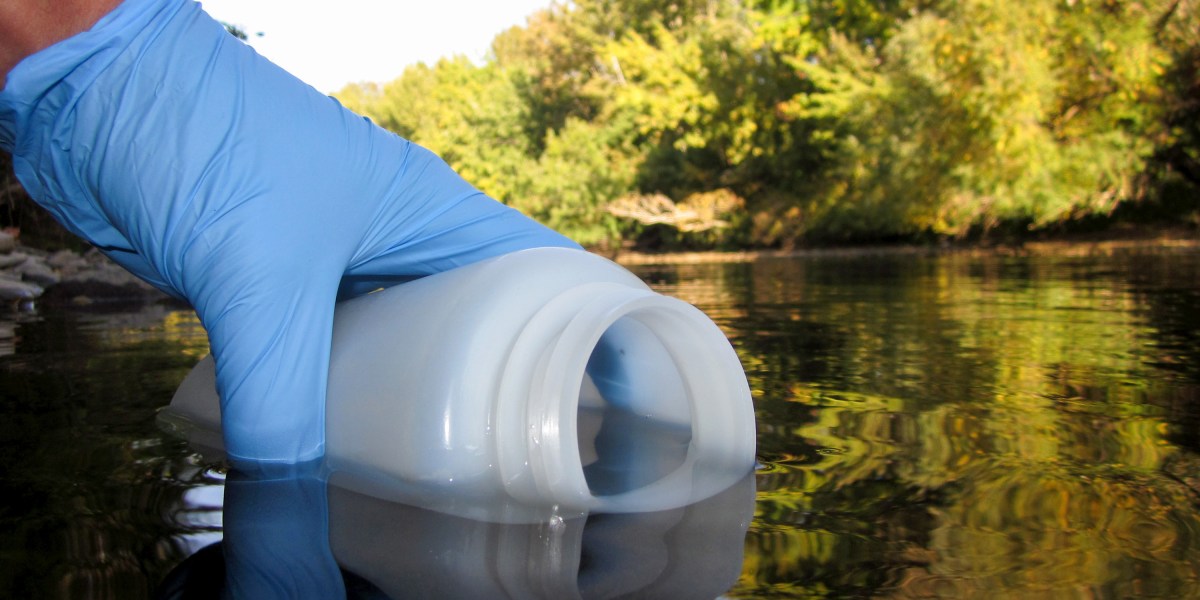
Frogs can be hard to detect, and they are not, of course, the only species that eludes more traditional, boots-on-the-ground detection. Thomsen began work on another organism that notoriously confounds measurement: fish. Counting fish is sometimes said to vaguely resemble counting trees — except they’re free-roaming, in dark places, and fish counters are doing their tally while blindfolded. Environmental DNA dropped the blindfold. One review of published literature on the technology — though it came with caveats, including imperfect and imprecise detections or details on abundance — found that eDNA studies on freshwater and marine fish and amphibians outnumbered terrestrial counterparts 7:1.
In 2011, Thomsen, then a Ph.D. candidate in Willerslev’s lab, published a paper demonstrating that the method could detect rare and threatened species, such as those in low abundance in Europe, including amphibians, mammals like the otter, crustaceans, and dragonflies. “We showed that only, like, a shot glass of water really was enough to detect these organisms,” he told Undark. It was clear: The method had direct applications in conservation biology for the detection and monitoring of species.
In 2012, the journal Molecular Ecology published a special issue on eDNA, and Taberlet and several colleagues outlined a working definition of eDNA as any DNA isolated from environmental samples. The method described two similar but slightly different approaches: One can answer a yes or no question: Is the bullfrog (or whatever) present or not? It does so by scanning the metaphoric barcode, short sequences of DNA that are particular to a species or family, called primers; the checkout scanner is a common technique called quantitative real-time polymerase chain reaction, or qPCR.
Scientists use eDNA to track creatures of all shapes and sizes, be it tiny bits of invasive algae, eels in Loch Ness, or a sightless sand-dwelling mole that hasn’t been seen in nearly 90 years.
Another approach, commonly known as DNA metabarcoding, essentially spits out a list of organisms present in a given sample. “You sort of ask the question, what is here?” Thomsen said. “And then you get all of the known things, but you also get some surprises, right? Because there were some species that you didn’t know were actually present.”
One aims to find the needle in a haystack; the other attempts to reveal the whole haystack. eDNA differs from more traditional sampling techniques where organisms, like fish, are caught, manipulated, stressed, and sometimes killed. The data obtained are objective; it’s standardized and unbiased.
“eDNA, one way or the other, is going to stay as one of the important methodologies in biological sciences,” said Mehrdad Hajibabaei, a molecular biologist at University of Guelph, who pioneered the metabarcoding approach, and who traced fish some 9,800 feet under the Labrador Sea. “Every day I see something bubbling up that didn’t occur to me.”
In recent years, the field of eDNA has expanded. The method’s sensitivity allows researchers to sample previously out-of-reach environments, for example, capturing eDNA from the air — an approach that highlights eDNA’s promises and its potential pitfalls. Airborne eDNA appears to circulate on a global dust belt, suggesting its abundance and omnipresence, and it can be filtered and analyzed to monitor plants and terrestrial animals. But eDNA blowing in the wind can lead to inadvertent contamination.
In 2019, Thomsen, for instance, left two bottles of ultra-pure water out in the open — one in a grassland, and the other near a marine harbor. After a few hours, the water contained detectable eDNA associated with birds and herring, suggesting that traces of non-terrestrial species settled into the samples; the organisms obviously did not inhabit the bottles. “So it must come from the air,” Thomsen told Undark. The results suggest a two-fold problem: For one, trace evidence can move around, where two organisms that come into contact can then tote around the other’s DNA, and just because certain DNA is present doesn’t mean that the species is actually there.
